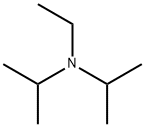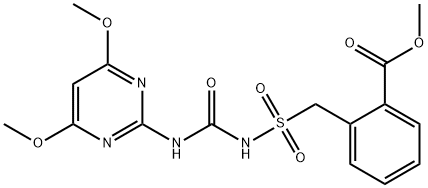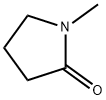3-Methyl-1-butene
- CAS NO.:563-45-1
- Empirical Formula: C5H10
- Molecular Weight: 70.13
- MDL number: MFCD00008937
- EINECS: 209-249-1
- SAFETY DATA SHEET (SDS)
- Update Date: 2024-12-18 14:15:30

What is 3-Methyl-1-butene?
Chemical properties
Colorless, extremely volatile liquid or gas; disagreeable odor.Soluble in alcohol; insoluble in water.
Physical properties
Colorless, flammable liquid or gas with a disagreeable odor
The Uses of 3-Methyl-1-butene
3-Methyl-1-butene has been used in asymmetric total synthesis of (?)-Linderol A, a potent inhibitor of melanin biosynthesis of cultured B-16 melanoma cells.
The Uses of 3-Methyl-1-butene
Organic synthesis, high-octane fuel manufacture.
Definition
ChEBI: An alkene that is but-1-ene carrying a methyl substituent at position 3.
General Description
A colorless volatile liquid with a disagreeable odor. Insoluble in water and less dense than water. Vapors heavier than air. Flash point below 0°F. Used to make other chemicals.
Air & Water Reactions
Highly flammable. Insoluble in water.
Reactivity Profile
3-Methyl-1-butene may react vigorously with strong oxidizing agents. May react exothermically with reducing agents to release hydrogen gas. In the presence of various catalysts (such as acids) or initiators, may undergo exothermic addition polymerization reactions.
Hazard
Highly flammable, dangerous fire and explosion risk, explosive limits 1.6–9.1%.
Health Hazard
Inhalation or contact with material may irritate or burn skin and eyes. Fire may produce irritating, corrosive and/or toxic gases. Vapors may cause dizziness or suffocation. Runoff from fire control or dilution water may cause pollution.
Safety Profile
Very dangerous fire hazard when exposed to heat, flame, or oxidizers. Explosive in the form of vapor when exposed to heat or flame. To fight fire, use alcohol foam, mist, spray, dry chemical, CO2. When heated to decomposition it emits acrid smoke and irritating fumes. See also 2-METHYL-1 BUTENE.
Source
Schauer et al. (1999) reported 3-methyl-1-butene in a diesel-powered medium-duty truck
exhaust at an emission rate of 160 μg/km.
Schauer et al. (2001) measured organic compound emission rates for volatile organic
compounds, gas-phase semi-volatile organic compounds, and particle-phase organic compounds
from the residential (fireplace) combustion of pine, oak, and eucalyptus. The gas-phase emission
rate of 3-methyl-1-butene was 6.9 mg/kg of pine burned. Emission rates of 3-methyl-1-butene
were not measured during the combustion of oak and eucalyptus.
California Phase II reformulated gasoline contained 3-methyl-1-butene at a concentration of 380
mg/kg. Gas-phase tailpipe emission rates from gasoline-powered automobiles with and without
catalytic converters were 0.35 and 22.5 mg/km, respectively (Schauer et al., 2002).
Environmental Fate
Photolytic. The following rate constants were reported for the reaction of 3-methyl-1-butene and
OH radicals in the atmosphere: 3.0 x 10-11 cm3/molecule?sec (Atkinson et al., 1979); 6.07 to 9.01 x
10-11 cm3/molecule?sec (Atkinson, 1985); 3.18 x 10-11 cm3/molecule?sec (Atkinson, 1990).
Chemical/Physical. Complete combustion in air yields carbon dioxide and water.
Properties of 3-Methyl-1-butene
| Melting point: | -168 °C |
| Boiling point: | 20 °C(lit.) |
| Density | 0.627 g/mL at 20 °C(lit.) |
| vapor pressure | 14.97 psi ( 20 °C) |
| refractive index | n |
| Flash point: | -57 °C |
| storage temp. | −20°C |
| solubility | Soluble in alcohol, benzene, and ether (Weast, 1986) |
| form | neat |
| pka | >14 (Schwarzenbach et al., 1993) |
| color | Colorless to Almost colorless |
| Water Solubility | 130 mg/kg at 25 °C (shake flask-GC, McAuliffe, 1966) |
| BRN | 505980 |
| Henry's Law Constant | (atm?m3/mol):
0.535 at 25 °C (Hine and Mookerjee, 1975) |
| CAS DataBase Reference | 563-45-1(CAS DataBase Reference) |
| NIST Chemistry Reference | 1-Butene, 3-methyl-(563-45-1) |
| EPA Substance Registry System | 3-Methyl-1-butene (563-45-1) |
Safety information for 3-Methyl-1-butene
| Signal word | Danger |
| Pictogram(s) |
 Flame Flammables GHS02  Exclamation Mark Irritant GHS07  Health Hazard GHS08  Environment GHS09 |
| GHS Hazard Statements |
H224:Flammable liquids H304:Aspiration hazard H335:Specific target organ toxicity, single exposure;Respiratory tract irritation H411:Hazardous to the aquatic environment, long-term hazard |
| Precautionary Statement Codes |
P210:Keep away from heat/sparks/open flames/hot surfaces. — No smoking. P233:Keep container tightly closed. P273:Avoid release to the environment. P331:Do NOT induce vomiting. P301+P310:IF SWALLOWED: Immediately call a POISON CENTER or doctor/physician. P403+P233:Store in a well-ventilated place. Keep container tightly closed. |
Computed Descriptors for 3-Methyl-1-butene
New Products
(S)-3-Aminobutanenitrile hydrochloride 4-Methylphenylacetic acid N-Boc-D-alaninol N-BOC-D/L-ALANINOL Tert-butyl bis(2-chloroethyl)carbamate 3-Morpholino-1-(4-nitrophenyl)-5,6-dihydropyridin- 2(1H)-one Furan-2,5-Dicarboxylic Acid Tropic acid 1-Bromo-3,5-Di-Tert-Butylbenzene S-2-CHLORO PROPIONIC ACID ETHYL ISOCYANOACETATE 2-Bromo-1,3-Bis(Dimethylamino)Trimethinium Hexafluorophosphate 4-IODO BENZOIC ACID 3-NITRO-2-METHYL ANILINE 1-(2,4-DICHLOROPHENYL) ETHANAMINE (2-Hydroxyphenyl)acetonitrile 4-Bromopyrazole 2-(Cyanocyclohexyl)acetic acid 4-methoxy-3,5-dinitropyridine 1-(4-(aminomethyl)benzyl)urea hydrochloride 2-aminopropyl benzoate hydrochloride diethyl 2-(2-((tertbutoxycarbonyl)amino) ethyl)malonate tert-butyl 4- (ureidomethyl)benzylcarbamate Ethyl-2-chloro((4-methoxyphenyl)hydrazono)acetateRelated products of tetrahydrofuran








You may like
-
 3-Methyl-1-butene (ca. 15% in Dichloromethane, ca. 2.5mol/L) CAS 563-45-1View Details
3-Methyl-1-butene (ca. 15% in Dichloromethane, ca. 2.5mol/L) CAS 563-45-1View Details
563-45-1 -
 3-Methyl-1-butene (ca. 16.5% in N,N-Dimethylformamide, ca. 2mol/L) CAS 563-45-1View Details
3-Methyl-1-butene (ca. 16.5% in N,N-Dimethylformamide, ca. 2mol/L) CAS 563-45-1View Details
563-45-1 -
![3-Methyl-1-butene (in cylinder without valve) [To use this product charged in cylinder, a valve is required which is sold separately (Product Code:V0030)] CAS 563-45-1](https://img.chemicalbook.in//Content/image/CP5.jpg) 3-Methyl-1-butene (in cylinder without valve) [To use this product charged in cylinder, a valve is required which is sold separately (Product Code:V0030)] CAS 563-45-1View Details
3-Methyl-1-butene (in cylinder without valve) [To use this product charged in cylinder, a valve is required which is sold separately (Product Code:V0030)] CAS 563-45-1View Details
563-45-1 -
 3-Methyl-1-butene CAS 563-45-1View Details
3-Methyl-1-butene CAS 563-45-1View Details
563-45-1 -
 1975-50-4 98%View Details
1975-50-4 98%View Details
1975-50-4 -
 2-HYDROXY BENZYL ALCOHOL 98%View Details
2-HYDROXY BENZYL ALCOHOL 98%View Details
90-01-7 -
 14714-50-2 (2-Hydroxyphenyl)acetonitrile 98+View Details
14714-50-2 (2-Hydroxyphenyl)acetonitrile 98+View Details
14714-50-2 -
 118753-70-1 98+View Details
118753-70-1 98+View Details
118753-70-1